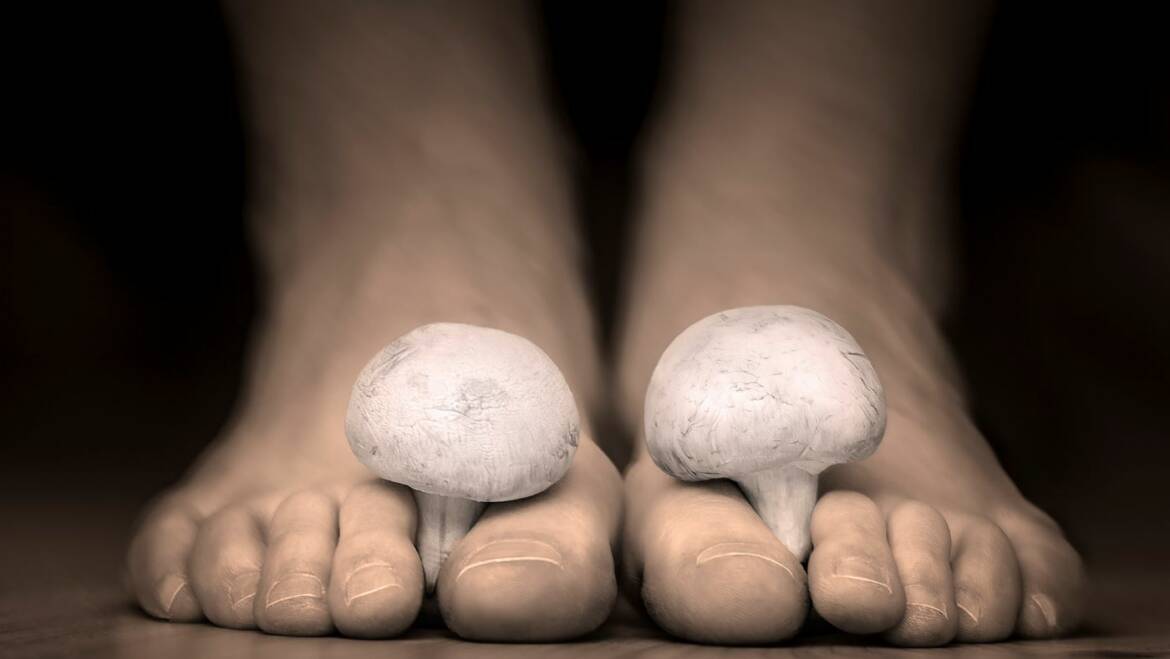Different types of foot fungus
The majority of infections people suffer from with regards to their feet are fungal in nature. The most common types of foot fungus people encounter are tinea pedis (athletes’ foot) and onychomycosis (toenail fungus).
Fungal infections develop quite quickly on the feet as the skin tissue can become weakened by continual abrasion and being damp and sweaty from physical activity. This is why tinea pedis is known as athletes’ foot because the feet of athletes are commonly wet with sweat from their activities.
While they generally do not cause significant complications, foot fungus can impact on the quality of life sufferers. Nails that are affected by fungal growth can become ugly and embarrassing for people, causing them to avoid exposing their feet to anyone. Areas affected by the fungus can become uncomfortably itchy and will be at a higher risk of bacterial infection.
These fungal foot infections, while rarely ever life-threatening, can be a persistent and challenging issue for many people.
Tinea pedis (athletes’ foot)
Tinea pedis is a widespread form of foot fungus that is usually identified by a flaky, itchy rash between the toes. People are commonly infected in damp, sweaty areas like sauna and gym arrives where it tends to thrive. Tinea pedis can result from contact with a variety of fungus.
The majority of the time, a case of tinea pedis can be identified by looking at the apparent symptoms. However, a closer examination of the skin can be beneficial for cases that are more serious or that routinely reoccur.
More mild cases of tinea pedis are often treated with antifungal creams or sprays that can be purchased over-the-counter at a pharmacy. Infections that are stubborn or serious is nature can warrant the use of oral antifungals that are taken for anywhere between 2 to 6 months.
Onychomycosis (toenail fungus)
Onychomycosis, also known as toenail fungus, is a fungal infection that manifests below the surface of the toenail. It typically develops slowly and exudes a yellow or white discolouration. It also causes flaking and thickening of the nail surface, as well as causing the nail to separate from the bed underneath.
Onychomycosis can sometimes accompany tinea pedis. It is seen more frequently among those with a vascular disease that causes lessened blood flow to extremities, or those who have weaker immune systems.
It usually is diagnosed visually by a doctor, and further diagnostic testing can be warranted in some cases. A particular type of fungus causing the infection can be identified by analysis of nail trimmings.
Onychomycosis is a particularly tricky issue to resolve and is embarrassing for many sufferers. Topical creams that may otherwise work with other infections are usually insufficient to penetrate the tissue of the nail. The most effective treatments are oral, but they can take a long time to work and cause healthy regrowth of the nail tissue.
What to do
Those suffering from fungal infections like tinea pedis or onychomycosis should seek professional medical diagnosis if over-the-counter treatments are ineffective. Those seeking to book a telehealth consultation can do so with Instant Consult.
by Instant Consult
Source: https://www.instantconsult.com.au/different-types-of-foot-fungus

